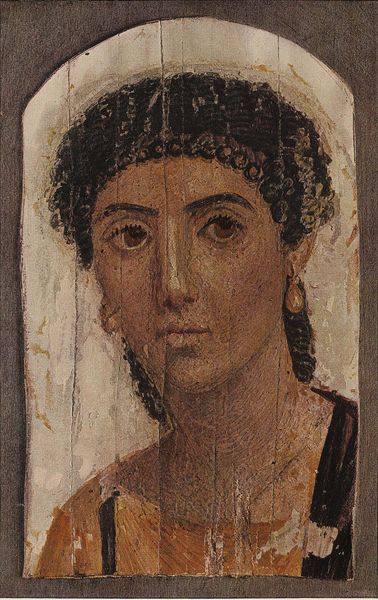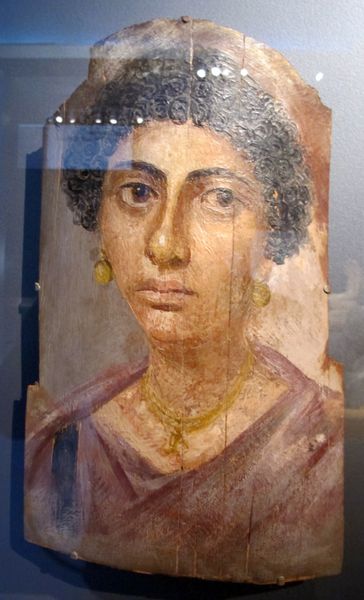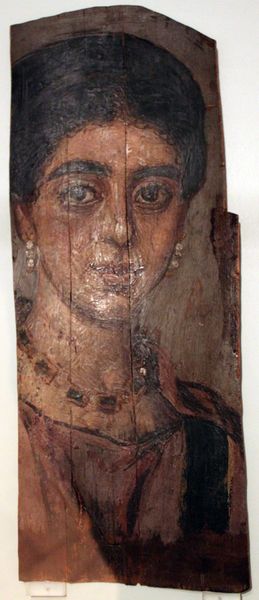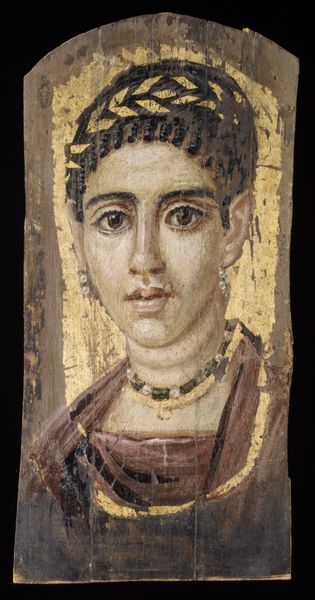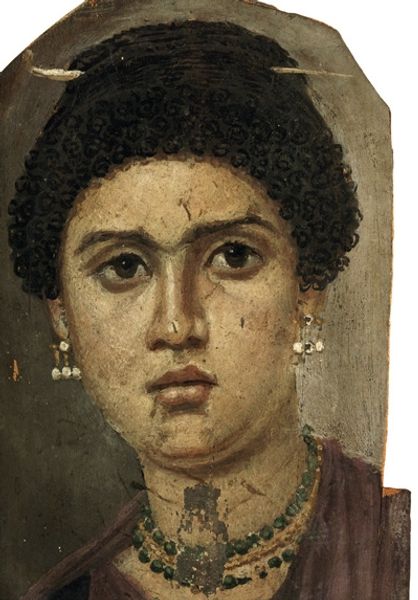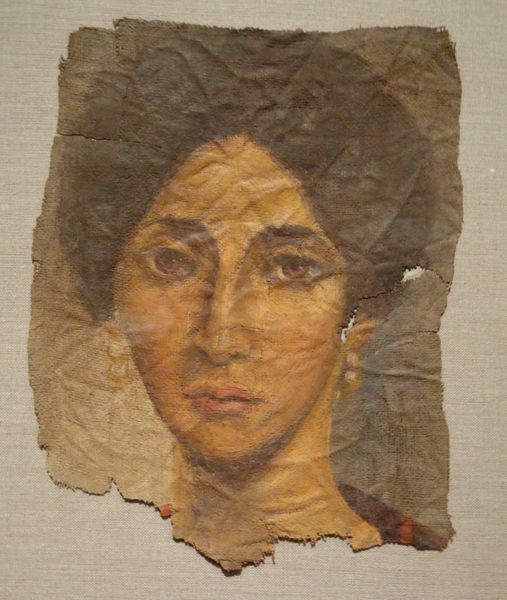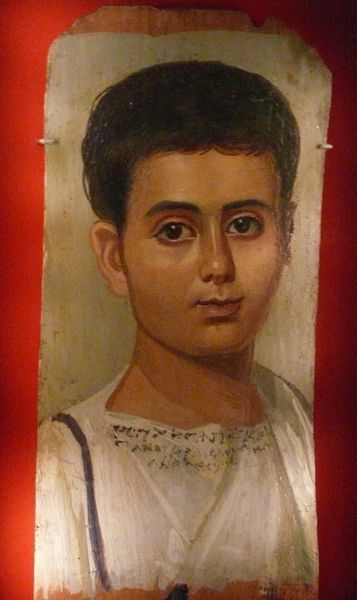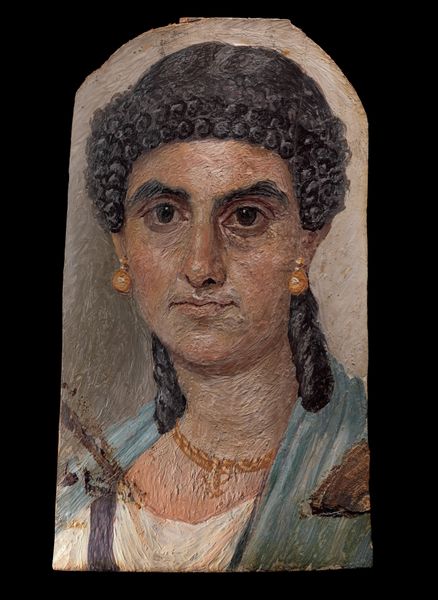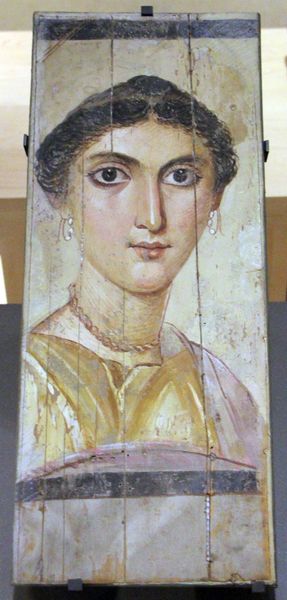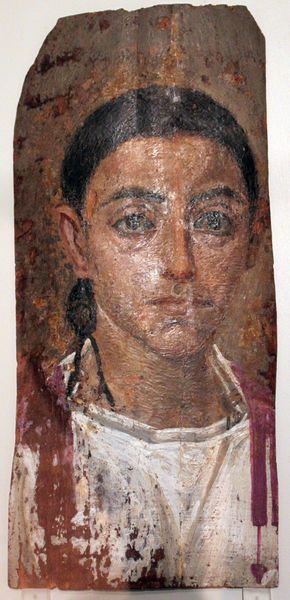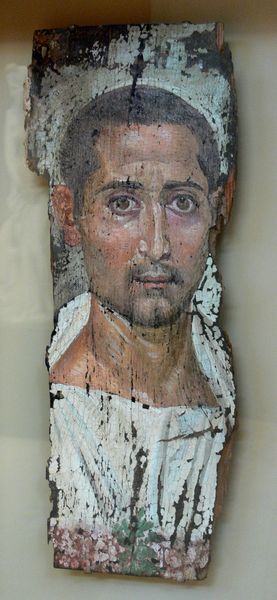
tempera, painting, fresco
#
portrait
#
tempera
#
painting
#
ancient-egyptian-art
#
fresco
#
geometric
#
underpainting
#
ancient-mediterranean
Copyright: Public domain
Curator: Here we have "Portrait of a Woman," one of the celebrated Fayum mummy portraits housed here at the Louvre. What strikes you first about her? Editor: Well, it's immediately intimate, isn't it? Her gaze is so direct, a bit unnerving, actually, like she's peering right through you across millennia. And the wood grain, visible beneath the paint…it makes me feel like I'm looking at a very old soul. Curator: Precisely! These portraits, often done in encaustic or tempera, were affixed to mummies during the Roman period in Egypt. It's a fascinating cultural confluence—Egyptian funerary traditions blending with Roman portraiture techniques. The presence of the wood is very telling here. This isn't about timeless, immutable beauty, it is a humble artifact carrying this woman’s spirit. Editor: Right. It’s kind of haunting that something this personal, this almost photorealistic, was intended to accompany someone into the afterlife. The Romans loved a good portrait. Did the Egyptians immediately adopt it too, or was there some initial resistance to that naturalism? Curator: It's likely that it became a status symbol amongst the Roman elite living in Egypt at the time. By immortalizing the likeness of this individual in a realistically detailed and intimate manner, she is framed by power structures associated with wealth and position in society. But the geometric nature of the work and use of tempera locate her more firmly in ancient Egyptian traditions, pushing the limits of visual and cultural rhetoric, making it incredibly progressive for its time. Editor: I am really drawn to the slightly rough, almost primitive feel of the piece. It's beautiful, but in a raw, honest way. Her earrings look almost childlike in their simplicity. There’s so much character in those eyes. If this was how someone memorialized their loved one back then, what are we doing now to make sure that people from our time are seen and remembered in the future? That is an almost impossible task! Curator: It poses so many questions, doesn’t it? About representation, about memory, about the enduring human desire to connect across time. This is just one example of cultural preservation through material, so it inspires us to really think about contemporary issues of identity and power. What narratives are we choosing to carry into the future? Editor: Beautifully said! I feel less like I've just observed an ancient relic, and more like I’ve had a brief, intense conversation with someone who has stories to tell. Curator: Indeed. These portraits serve as bridges—connecting us not only to the past, but to timeless questions of who we are and how we choose to be remembered.
Comments
No comments
Be the first to comment and join the conversation on the ultimate creative platform.


